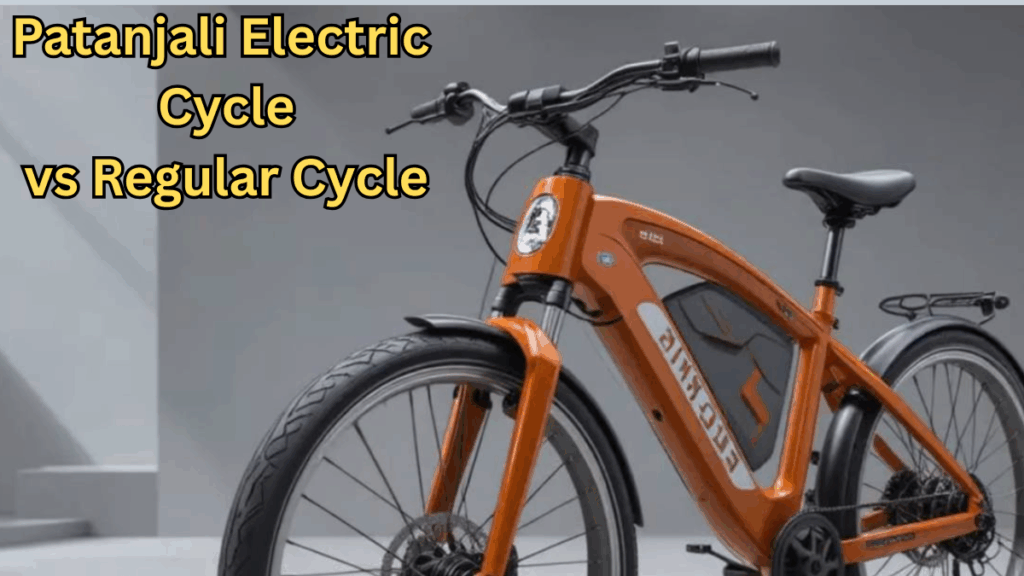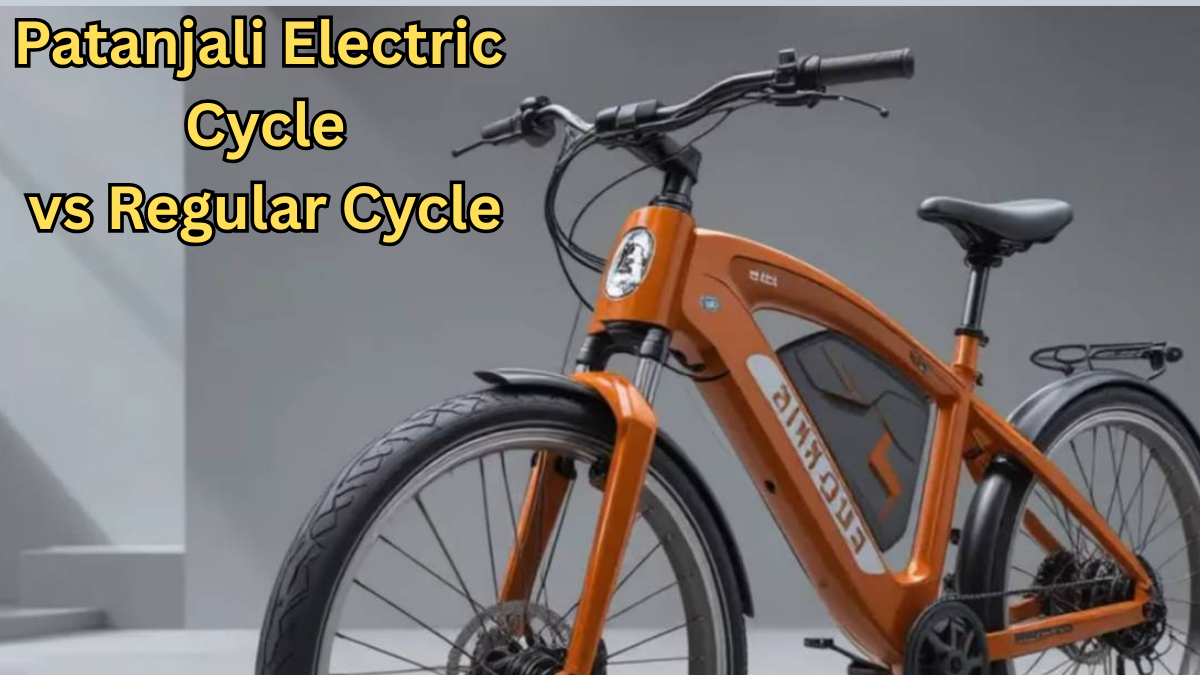India’s mobility scene is changing fast — and now, with Patanjali Electric Cycle launched vs normal cycle, the comparison is sparking curiosity among eco-conscious riders. Whether you’re a student, office commuter, or fitness lover, this new electric cycle could reshape your daily travel routine with its focus on sustainability and affordability.
Let’s explore the range, charging time, and daily cost differences between Patanjali’s electric cycle and a regular cycle in India.

Overview: What Makes Patanjali’s Electric Cycle Special
Patanjali’s entry into the electric mobility market has created a buzz. Known for its natural and affordable product lines, the brand aims to make green transport accessible to every Indian household.
Here’s a quick look at what sets it apart:
- Eco-friendly commute option with zero fuel dependency
- Cost-efficient travel ideal for students and professionals
- Compact and comfortable design suited for city rides
- Easy charging and maintenance for hassle-free use
Key Specifications Comparison
Below is a side-by-side comparison of the Patanjali Electric Cycle launched vs normal cycle, focusing on essential aspects like range, charging, and cost in India.
| Features | Patanjali Electric Cycle | Regular Cycle |
|---|---|---|
| Power Source | Electric motor (Battery operated) | Manual pedaling |
| Range per Charge | 40–60 km (approx.) | Depends on rider stamina |
| Charging Time | 3–4 hours | Not applicable |
| Top Speed | 25 km/h | Depends on pedaling effort |
| Daily Cost in India | ₹1–₹2 (electricity cost) | None (only physical effort) |
| Maintenance | Minimal (battery & brakes) | Very low |
| Eco Impact | Zero emissions | Zero emissions |
| Best For | Commuters, students, urban riders | Fitness, short rides |
Charging and Battery Performance
One of the most important aspects of the Patanjali Electric Cycle launched vs normal cycle debate is the charging convenience.
- The electric cycle runs on a lithium-ion battery, which can be charged using a standard home socket.
- Full charging takes around 3–4 hours, offering up to 60 km of range.
- Charging cost is minimal — roughly ₹1 to ₹2 per day, depending on local electricity rates.
This makes it a perfect choice for daily office commutes or college travel within 15–20 km distances.
Range and Real-World Usage
For Indian roads and traffic conditions, range plays a crucial role.
- The electric cycle’s range of up to 60 km per charge easily covers most daily travel needs.
- In comparison, a normal cycle depends solely on the rider’s stamina and time, which can make long rides tiring.
- The electric assist ensures smooth riding even on slopes and congested routes.
Daily Cost and Long-Term Savings
When analyzing the daily cost in India, the Patanjali Electric Cycle proves to be far more efficient in the long run.
| Parameter | Patanjali Electric Cycle | Normal Cycle |
|---|---|---|
| Initial Cost | ₹25,000–₹35,000 (estimated) | ₹5,000–₹10,000 |
| Monthly Maintenance | ₹100–₹200 | ₹50–₹100 |
| Daily Running Cost | ₹1–₹2 | None |
| Yearly Savings vs Scooter | ₹10,000–₹15,000 | ₹10,000–₹15,000 |
Though the electric cycle’s upfront price is higher, it saves significantly on fuel, time, and effort in the long term.
Which One Should You Choose
If your priority is fitness and minimal cost, a regular cycle still wins.
But if you’re looking for comfort, speed, and eco-friendly commuting, the Patanjali Electric Cycle is the smarter pick.
Choose Patanjali Electric Cycle if you want:
- A daily ride without exhaustion
- A sustainable, electric-assisted commute
- Minimal maintenance and running cost
FAQs
Q1. What is the range of the Patanjali Electric Cycle on a full charge?
The Patanjali Electric Cycle offers a range of 40–60 km per full charge, depending on riding conditions and terrain.
Q2. How long does it take to charge the Patanjali Electric Cycle?
It takes about 3 to 4 hours to fully charge the battery using a standard home plug point.
Q3. What is the daily cost of running the Patanjali Electric Cycle in India?
The daily cost is roughly ₹1–₹2, which is far more economical than petrol or diesel two-wheelers.
Q4. Is the Patanjali Electric Cycle suitable for long-distance rides?
Yes, it’s ideal for medium-distance travel (up to 60 km per charge), making it perfect for city commutes or short rural rides.
Final Verdict
The Patanjali Electric Cycle launched vs normal cycle comparison highlights how electric mobility can make daily commuting simpler and more affordable in India. With its efficient charging, extended range, and minimal daily cost, the Patanjali Electric Cycle blends tradition with technology — redefining how Indians move towards a greener tomorrow.
Click here to learn more
